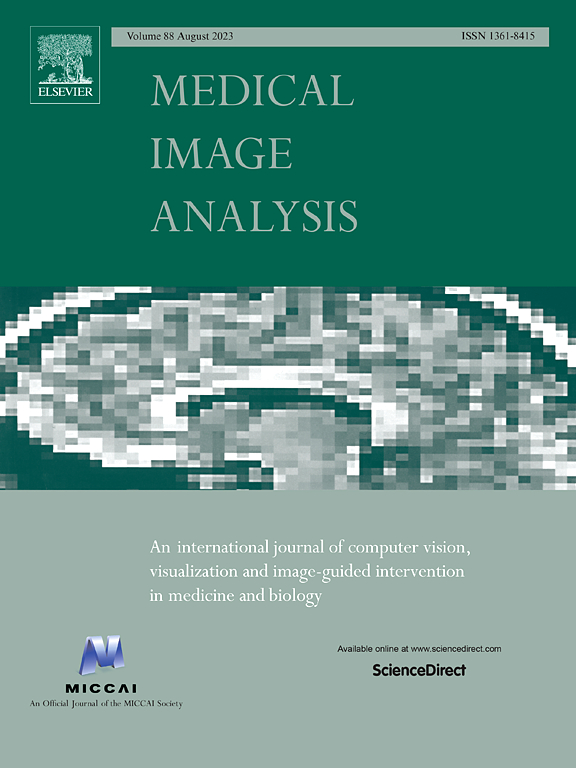Fine-scale striatal parcellation using diffusion MRI tractography and graph neural networks
IF 10.7
1区 医学
Q1 COMPUTER SCIENCE, ARTIFICIAL INTELLIGENCE
引用次数: 0
Abstract
The striatum, a crucial part of the basal ganglia, plays a key role in various brain functions through its interactions with the cortex. The complex structural and functional diversity across subdivisions within the striatum highlights the necessity for precise striatal segmentation. In this study, we introduce a novel deep clustering pipeline for automated, fine-scale parcellation of the striatum using diffusion MRI (dMRI) tractography. Initially, we employ a voxel-based probabilistic fiber tractography algorithm combined with a fiber-tract embedding technique to capture intricate dMRI connectivity patterns. To maintain critical inter-voxel relationships, our approach employs Graph Neural Networks (GNNs) to create accurate graph representations of the striatum. This involves encoding probabilistic fiber bundle characteristics as node attributes and refining edge weights using activation functions to enhance the graph’s interpretability and accuracy. The methodology incorporates a Transformer-based GraphConv autoencoder in the pre-training phase to extract critical spatial features while minimizing reconstruction loss. In the fine-tuning phase, a novel joint loss mechanism markedly improves segmentation precision and anatomical fidelity. Integration of traditional clustering techniques with multi-head self-attention mechanisms further elevates the accuracy and robustness of our segmentation approach. This methodology provides new insights into the striatum’s role in cognition and behavior and offers potential clinical applications for neurological disorders.

利用扩散核磁共振成像和图神经网络进行精细纹状体分割
纹状体是基底神经节的重要组成部分,通过与皮层的相互作用,在各种脑功能中起着关键作用。纹状体内部复杂的结构和功能多样性突出了纹状体精确分割的必要性。在这项研究中,我们引入了一种新的深度聚类管道,用于使用扩散MRI (dMRI)束图对纹状体进行自动化的精细分割。最初,我们采用基于体素的概率纤维束成像算法结合纤维束嵌入技术来捕获复杂的dMRI连接模式。为了维持关键的体素间关系,我们的方法使用图神经网络(gnn)来创建纹状体的精确图表示。这包括将概率纤维束特征编码为节点属性,并使用激活函数精炼边缘权重,以增强图的可解释性和准确性。该方法在预训练阶段结合了基于transformer的GraphConv自动编码器,以提取关键空间特征,同时最大限度地减少重建损失。在微调阶段,一种新的关节丢失机制显著提高了分割精度和解剖保真度。将传统聚类技术与多头自注意机制相结合,进一步提高了分割方法的准确性和鲁棒性。该方法为纹状体在认知和行为中的作用提供了新的见解,并为神经系统疾病提供了潜在的临床应用。
本文章由计算机程序翻译,如有差异,请以英文原文为准。
求助全文
约1分钟内获得全文
求助全文
来源期刊

Medical image analysis
工程技术-工程:生物医学
CiteScore
22.10
自引率
6.40%
发文量
309
审稿时长
6.6 months
期刊介绍:
Medical Image Analysis serves as a platform for sharing new research findings in the realm of medical and biological image analysis, with a focus on applications of computer vision, virtual reality, and robotics to biomedical imaging challenges. The journal prioritizes the publication of high-quality, original papers contributing to the fundamental science of processing, analyzing, and utilizing medical and biological images. It welcomes approaches utilizing biomedical image datasets across all spatial scales, from molecular/cellular imaging to tissue/organ imaging.
 求助内容:
求助内容: 应助结果提醒方式:
应助结果提醒方式:


